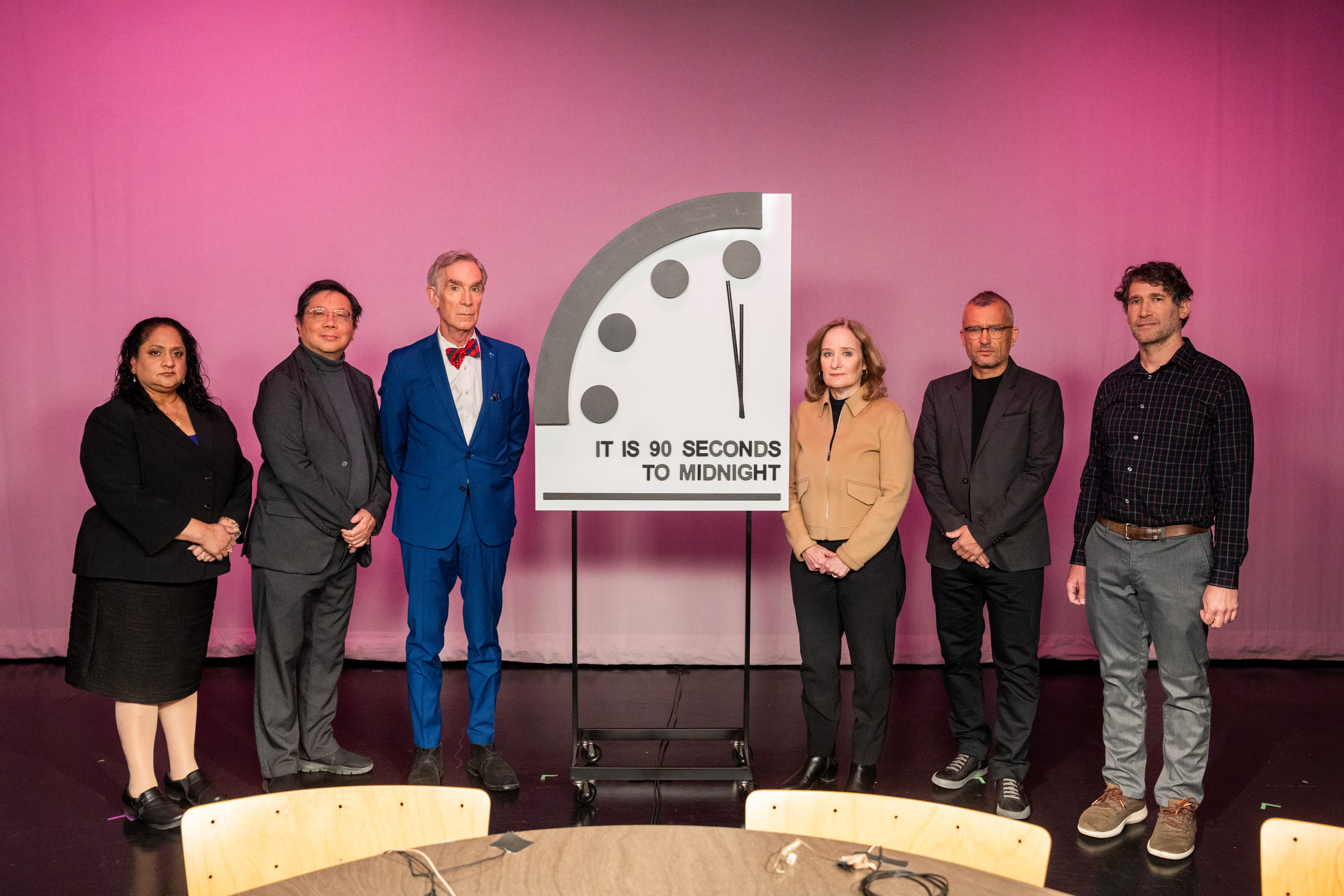Take Action to Turn Back the Doomsday Clock
It’s 90 seconds to midnight! On January 23, the Bulletin of the Atomic Scientists announced that the Doomsday Clock remains at 90 seconds to midnight for the second year in a row – the closest to global catastrophe it has ever been.
In a statement, the Bulletin’s Science and Security Board cited several threats that led to the decision to leave the clock set so close to Doomsday:
- The nuclear risk, particularly as wars involving nuclear powers, including Russia and Israel, threaten to escalate and expand to wider regional conflicts; tensions rise between nuclear-armed states; and the international arms control regime continues to crumble.
- Climate change, as progress toward the Paris Agreement goals remains slower than necessary, and even record-breaking investments in renewable energy are offset by continued trillion-dollar investment in fossil fuels.
- Biological threats, as advances in biotechnology increase the risk of weaponized and accidentally-released disease – a threat made more volatile by advances in artificial intelligence (AI).
- Disruptive technologies, including multiple uses of AI to increase threats from nuclear, conventional, and biological weapons and undermine democratic systems through the proliferation of misinformation.
Find out what you can do to turn back the Doomsday Clock.
The current issue of the Bulletin of the Atomic Scientists magazine is dedicated to actions you can take to turn back the clock and move the world further from global destruction, including articles on climate action featuring renowned climate expert Bill McKibben, legislative advocacy on nuclear weapons from Congressman Ted Lieu, and a reflection on intergenerational lessons about activism from renowned Catholic writer and activist Frida Berrigan. Discover how you can help avert global catastrophe today!
Photo of the 2024 Doomsday Clock announcement courtesy of the Bulletin of the Atomic Scientists.

